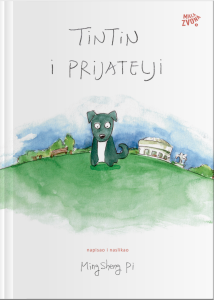4 Knjige - 59,85 €
-
 Letters for Everyone
15,00 € × 1
Letters for Everyone
15,00 € × 1 -
 Croatian Folktales
17,00 € × 1
Croatian Folktales
17,00 € × 1 -
 Paintings
11,95 € × 1
Paintings
11,95 € × 1 -
 The Magic Eyeglasses
15,90 € × 1
The Magic Eyeglasses
15,90 € × 1
Ukupno : 59,85 €

 Letters for Everyone
Letters for Everyone  Croatian Folktales
Croatian Folktales  Paintings
Paintings  The Magic Eyeglasses
The Magic Eyeglasses 














